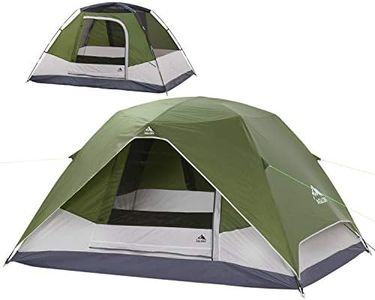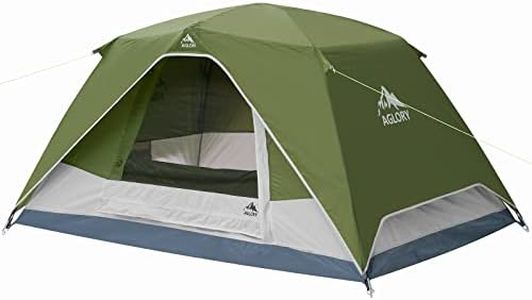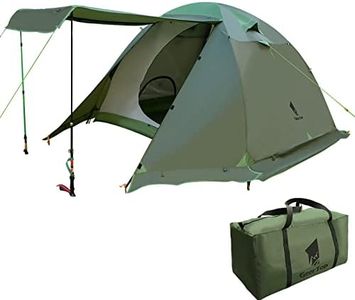We Use CookiesWe use cookies to enhance the security, performance,
functionality and for analytical and promotional activities. By continuing to browse this site you
are agreeing to our privacy policy
3 Best Family Tents
From leading brands and best sellers available on the web.Buying Guide for the Best Family Tents
Choosing the right family tent is all about matching your family's needs with the features that will make your camping experience comfortable and enjoyable. Think about how many people will be sleeping in the tent, the type of weather you expect, how easy it is to set up, and how much space you want for sleeping and storing gear. The right tent should keep you dry, give you enough room to move around, and be easy enough to handle so that setting up camp is part of the fun, not a chore.CapacityCapacity refers to the number of people a tent is designed to sleep. This is important because it determines how comfortable your family will be inside the tent. Tent capacities are usually listed as 4-person, 6-person, 8-person, etc., but these numbers assume everyone is sleeping close together with little extra space. If you want more room for gear or just to spread out, consider choosing a tent with a higher capacity than the number of people in your group. For example, a family of four might be more comfortable in a 6-person tent.
Season RatingSeason rating tells you what kind of weather the tent is built to handle. Most family tents are 3-season, meaning they are suitable for spring, summer, and fall, and can handle rain and light wind. Some are 4-season, designed for harsher conditions like snow and strong winds, but these are heavier and less ventilated. If you plan to camp mostly in mild weather, a 3-season tent is usually enough. If you expect cold or extreme weather, look for a 4-season tent.
Setup TypeSetup type describes how the tent is assembled. Some tents are traditional with poles you insert and connect, while others are instant or pop-up tents that can be set up in minutes. If you want a quick and easy setup, especially with kids around, an instant tent might be best. If you don’t mind spending more time and want a sturdier structure, a traditional pole tent could be a better fit. Think about how much time and effort you want to spend setting up and taking down your tent.
Floor Space and HeightFloor space is the total area inside the tent, and height refers to how tall the tent is at its highest point. More floor space means more room for sleeping and storing gear, while a taller tent allows you to stand up and move around more easily. If you want to be able to stand up to change clothes or just want a more open feel, look for a tent with a higher peak height. For families, extra floor space can make a big difference in comfort, especially on longer trips.
VentilationVentilation is about how well air flows through the tent, which helps reduce condensation and keeps the inside comfortable. Tents with large mesh windows, multiple doors, and roof vents offer better airflow. If you camp in warm or humid areas, good ventilation is especially important to keep everyone cool and prevent stuffiness. Look for tents with plenty of mesh panels and adjustable vents if airflow is a priority for your family.
Weather ProtectionWeather protection includes features like waterproof materials, sealed seams, and a rainfly (an extra cover that goes over the tent). These features keep you dry during rain and protect against wind. If you expect wet or unpredictable weather, make sure the tent has a full-coverage rainfly and a bathtub-style floor (where the floor material extends up the sides a few inches). For mostly dry conditions, basic weather protection may be enough.
Storage and OrganizationStorage and organization features include things like interior pockets, gear lofts, and vestibules (covered areas outside the main tent for storing shoes or gear). These help keep your tent tidy and make it easier to find things. If you have a lot of gear or want to keep things organized, look for tents with plenty of storage options. Vestibules are especially useful for keeping muddy shoes and wet gear out of the sleeping area.



